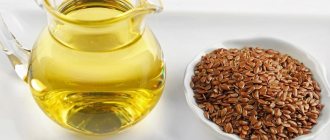Pies, pizza, cakes, dumplings, and other favorite dishes cannot be prepared without flour. It is the basis of any test. Often purchased for future use. Only over time it deteriorates, cakes, baked goods rise poorly, and a very strange taste and unpleasant smell appear. Even worse, pests attack.
Today we will find out the expiration date of flour. At the same time, we’ll tell you about the dependence on the degree of purification and select suitable storage periods. Bonus - away, bugs! We share proven ways to protect flour from food pests.
Does the product have a shelf life?
The shelf life of flour depends on its storage conditions. In order to reliably preserve flour without deteriorating its quality, optimal environmental conditions have been scientifically established. The legislator approved the shelf life for each type of flour:
- high-quality wheat flour - 6-8 months;
- rye flour - 4-6 months;
- corn and soybean non-deodorized flour - 3-6 months;
- deodorized soy flour – 12 months.
There are also indicators for rooms where the product is directly located: temperature - +5...+15 °C, relative air humidity should not exceed 75%. The standards are legally enshrined in state GOST standards.
Subject to the storage conditions of flour, its quality is guaranteed. According to Resolution No. 720 of June 16, 1997, flour is included in the List of goods that are considered unsuitable for their intended use after their expiration date. The manufacturer is required to indicate the date of manufacture of flour. The countdown of the flour's shelf life begins with it.
To extend shelf life, it is important to control the conditions in which flour is stored. If the storage conditions of the product differ from the standard ones, the period during which the product will be suitable for consumption will also change.
Selecting a location
Correct storage of flour at home
After selecting and preparing containers for pouring flour, pay attention to choosing the optimal place to place it, based on the general conditions for storing the product. Let's look at the most popular places to place it
Let's look at the most popular places to place it.
| 1 | Kitchen Cabinet |
| 2 | Cellar |
| 3 | Balcony |
| 4 | Fridge |
| 5 | Pantry room |
1
Kitchen Cabinet
The product is most often stored in kitchen cabinets and pencil cases, as this allows easy access to it and use it at any time. In addition, the location often has relatively low humidity and no light.
However, keep in mind that it is recommended to choose cabinets that are distant from the stove and sink to place the container, in order to avoid fluctuations in temperature and humidity in the storage area.
2
Cellar
Cellar owners often put large bags of flour in them, but the place is not particularly suitable for placing a valuable product due to the relatively high humidity and the high probability of the formation of unwanted microflora.
However, the cellar also has advantages - relatively low temperature and darkness. If you choose hermetically sealed containers, you can store flour this way.
3
Balcony
The balcony is also a good place to store flour if the temperature there is maintained between +12 and +22. Then you need to pour the product into an airtight, opaque container and put it in a closet so that it is not exposed to sunlight.
It is not recommended to store flour on unheated balconies, since sudden temperature fluctuations and negative indicators will negatively affect the quality of the product.
4
Fridge
Rarely used, but convenient place for storing flour, in which it can be stored for a maximum time - up to 2-3 years
However, in this case, pay attention to its sealed packaging so that it does not absorb surrounding odors from the refrigerator compartment
5
Pantry room
A great place to store items you don't use in your daily cooking. And flour is one of them, especially if you buy it in large quantities.
A stable temperature is maintained in the pantry room, and most often it is several degrees lower than in the entire apartment, which further increases the shelf life of the flour.
Marking
When producing flour, the manufacturer is obliged to mark the date of flour production on storage containers (bags, paper bags for packaging). The marking is applied typographically or stamped to each unit of consumer packaging and contains the following information about the product:
- trademark and (or) name of the manufacturer, location and subordination;
- name of the product (type, grade and number - for graded and numbered products); the word “vitaminized” for premium and first grade wheat baking flour is distinguished as large;
- net weight (kg);
- production date and packer shift number;
- shelf life (for all types of flour, oatmeal and oatmeal);
- designation of the standard or other scientific and technical documentation for the product;
- the inscription “store in a dry place”;
- information on nutritional and energy value (calorie content) per 100 g of product, protein, fat, carbohydrate content.
On a bag made of polyethylene materials, the markings are applied to the film using a printing method or with a dater on a paper label, which is glued or inserted into the bag. During packaging, a marking label measuring 6x9 cm made of cardboard or sack paper is sewn or glued onto each bag of flour during packaging. It must also contain the same information as on the consumer packaging.
Recommendations for choosing a location
Flour should be stored in a dry place, where there are no temperature fluctuations and optimal parameters are maintained. Pantries, built-in pencil cases or shelves in kitchen cabinets, and mezzanines are most suitable for this purpose.
Pantry
A cool pantry, out of sunlight, is ideal for storing flour. The product is placed on shelves in canvas bags and glass jars.
Refrigerator shelf
Storing it on the refrigerator shelf increases the shelf life of flour. It is poured into glass or plastic containers and tightly closed with lids. The disadvantage is that it is impossible to place a large number of containers in the refrigerator.
Balcony or loggia
In winter, during frosts, flour can be stored in containers on the loggia or balcony. The option is not considered the most successful, since during such storage the temperature differences are large, there is no access to air and the product “does not breathe.”
Kitchen pencil case
In small kitchens, where there is always not enough space, a convenient way to arrange containers with flour in cabinets. Product packages can be folded compactly. Thanks to the flat lids of the containers, they are placed on top of each other and significantly save space.
Bottom shelves of kitchen cabinets
The temperature on the lower shelves of kitchen cabinets is slightly lower than on the upper ones. This is especially noticeable when the cabinet is located next to the hob. Therefore, the lower shelves are more suitable for bulk products.
How much is it and what does it depend on?
The main regulatory document for storing wheat and other flour is GOST 26791-89 “Grain processing products. Packaging, labeling, transportation and storage". They provide containers for storing and transporting flour.
Consumer containers for flour are:
- paper bags;
- cardboard packs or paper with an inner bag;
- packages of their thermowelded polymer materials.
Bags and packs must be glued together. Flour is packaged in consumer containers in 1, 2 and 3 kg, and cereals - from 250 g to 1 kg, with a multiplicity of 25 g. For transportation, bags and packs of flour are placed in boxes with a capacity of up to 15 kg.
During storage, fats are broken down and the product oxidizes. In order to extend its consumer properties, it is necessary to create conditions that prevent these processes. The simplest is to reduce the storage temperature while maintaining the same air humidity of 75%. If this temperature regime is observed, the shelf life of flour increases to 2 years.
The shelf life of flour also depends on the raw materials from which it is made.
Shelf life table for different types and grades of flour:
| Name of flour | Tara | Storage temperature, °C | Ambient air humidity, % | Shelf life, months |
| Wheat | From paper, fabric, plastic | +5-15 | 60-75 | 6 |
| Rye | Glass or plastic | +5-15 | 60-75 | 6 |
| Linen | Vacuum packaging | +15-10 | 10 | |
| Corn | Sealed | +5-15 | 60-70 | 3 |
| Oatmeal | Breathable paper (perforated) | +20 | 60 | 2 |
| Buckwheat | Made from fabric, paper | +5-+20 | 70 | |
| Rice | Glass, hermetically sealed | +5 — 15 | 60 | 6 |
| Almond | Sealed | 12 | ||
| Meat and bone | Tightly sealed packaging | Up to +30 | 75 | 6 |
| Whole grain | Sealed | +5-15 | 60-75 | 2-3 (after opening the container) |
If the packaging shows extended shelf life, then such flour is produced with the addition of antioxidant products:
- E 928 Benzoyl peroxide.
- E930 Calcium peroxide and others.
It is hardly worth using it for culinary purposes at home.
Shelf life of original properties (shelf life)
Manufacturers associate the period of safe use of a bulk product with the material of its manufacture. The most popular flour industry products on the market are listed in the table:
| Base material | Storage period (months) |
| Premium wheat | 12 |
| Rye | 6 |
| Corn | 3 |
| Buckwheat | 6 |
| Rice | 6 |
| Almond | 6 |
| Peas | 8-10 |
| Linen | 10 |
| Bird cherry | 12 |
| Pumpkin (seeds) | 6 |
| Chickpeas | 12 |
| Coconut | 2 |
| Barley | 6 |
Attention: pancake flour is a mixture of products, including milk powder, egg powder and others. It is suitable for use for up to six months.
Conditions and rules of storage in warehouses
In warehouses for storing flour, conditions are created that meet SanPiN 2.3.2.1324-03 “Hygienic requirements for shelf life and storage conditions of food products,” approved by the Chief State Sanitary Doctor of the Russian Federation on May 21, 2003.
The warehouse must be ventilated and kept dry at all times. Relative humidity is maintained at 75%.
In winter, the temperature in a closed warehouse should not drop below +10°C. • Infestation with barn pests is not allowed. For this purpose, treatment schedules against pests are drawn up, taking into account their life cycle.
How to tell if flour has gone bad
A simple method is to smell it. A musty, bitter, unpleasant odor indicates spoilage. A specific aroma may appear long before the expiration date. The reason is a violation of storage rules. Sometimes spoiled products end up at home.
Signs of damage:
- presence of mold. We examine it carefully. Plaque appears on the walls of the dishes, along the edges. Further, inclusions of a different shade become noticeable in the total mass;
- hard lumps. Tracking is allowed. Such lumps easily crumble when pressed;
- rancid taste. You don't have to eat several spoons. We taste it with the tip of our tongue and spit it out.
It is impossible to extend the shelf life of a product that is starting to deteriorate. When the degree of damage is small, we actively use it. If unpleasant signs actively appear, it is better to get rid of it.
At home
As with industrial storage, it is important to maintain temperature and humidity conditions at home. The permissible temperature is considered to be +20 °C (optimally +5...+15 °C), humidity - 75%. To prevent condensation from forming on the packaging, leading to the formation of lumps, it is necessary to eliminate temperature fluctuations. After opening the original packaging, the flour is poured into glass or special plastic containers with tight lids.
To increase the shelf life of use at home, flour is prepared using several methods:
- dry by spreading it on clean paper or parchment in a dry room for 30-60 minutes;
- dry on a baking sheet in the oven at 50 °C for 10 minutes;
- put in the freezer for a day.
For long-term use, flour is placed in prepared, thoroughly dried opaque containers. The best place in the apartment is considered to be:
- Kitchen Cabinet;
- pantry;
- fridge.
You should also isolate from sharp and strong-smelling products: coffee, spices.
To protect against flour pests, the following methods are used:
- Treating kitchen cabinet shelves with 9% vinegar.
- Adding a couple of cloves of garlic per 1 kg of flour to the storage container.
- A flax bag filled with flour is placed in a larger one, and the space between it is filled with dried calendula.
Preventive methods
Of course, it’s easier to protect your supplies than to throw away food later or deal with pests for a long time.
According to the rules, you need to bake the purchased flour on a baking sheet for several minutes or, alternatively, freeze it for several hours in the freezer. But this is long and troublesome. Therefore, not everyone does this.
But here are simpler methods that are not difficult to use:
- add garlic to the flour at the rate of 2 cloves per kilogram. There will be no smell, but there will be reliable protection from insects. Just remember to change the garlic every 1-1.5 months, because the phytoncides, which repel with their smell, evaporate over time;
- Place dried calendula flowers in bags and place them with flour. The smell of the plant perfectly repels all insects for at least 3-4 months;
- place a bay leaf in a container with flour. It also has a long-lasting effect and in no way harms the flour itself;
- One of the most modern options for protecting flour and cereals from bugs is the use of regular mint chewing gum. You just need to open the pack and put it next to the storage container.
Take note! If you decide to store flour in canvas bags, first soak them in a strong saline solution (3-4 spoons per liter of water), and then dry them without rinsing.
Cleanliness will not save you from pest invasion. It is necessary to wipe the shelves with vinegar at least once a week. You can soak a sponge in it and treat the surfaces manually, or use a spray bottle. Only in the second case, you need to make sure that the liquid does not get on open products.
Can it be used if time is up?
If storage was carried out in compliance with all requirements or at a low temperature, there was no change in the original properties, the flour is quite suitable for baking. If there are disturbances in the temperature or humidity of the environment in the room where the flour is stored, it will spoil:
- Rancidity . During storage, the fats contained in flour oxidize, which affects the taste. There is a process of increasing toxic substances formed during the chemical reaction. In this case, the nutritional value of the product is lost.
- The appearance of mold . When stored at high humidity, flour becomes moldy. In warm and humid conditions, molds multiply very quickly and occupy a large area. Such flour has a musty smell, which alone discourages its use.
- Souring is caused by two types of microorganisms that can break down starch and ferment flour to sugar, releasing organic acids. Their volatility explains the sour taste. With additional sifting, some of the acids evaporate and the aroma becomes less intense.
- Compaction occurs as a result of changes in the flour structure. This is a natural process that occurs under the influence of the flour’s own mass as a result of prolonged storage of the product. After sifting through a sieve, the flour is ready for use.
Once it has lost its qualities, it can be used for children’s crafts as a paste if saving money is important. Under no circumstances should such flour be used for nutrition, so as not to harm your health.
By observing the storage conditions of flour, you can increase its shelf life. There are methods for this that have been tested by time and the experience of housewives. It is better to monitor your household supplies and purchase only the required amount of the product.
The best container for home
How to store flour or cereal at home?
Many housewives, having bought, for example, flaxseed flour or semolina in a paper bag, do not consider it necessary to pour it into another container. But after opening the package, you can no longer store bulk products in paper. The best container for storing bulk food materials is a glass container with an airtight lid. This could be a jar or container. If you find such dishes heavy, bulky and inconvenient, you can use a plastic container with rubber gaskets on the lid for a tighter fit. They are also perfect for our purpose. Lightweight and inexpensive containers can be purchased in a variety of sizes and shapes convenient for you. Linen bags, which are very popular among advanced housewives, are well suited for storing bulk solids, dried fruits and mushrooms, crackers and bread. Flax is a natural material that allows food products to “breathe,” which means that neither your flaxseed flour nor semolina will become moldy in them and no living creatures will grow in them. They are easy to use, pleasant to the touch and take up little space.
What should you store the purchased product in if a regular two-kilogram bag is not your format? A large amount of raw materials will be stored well in linen bags or thick paper bags. Before long-term storage, be sure to dry the product on a piece of parchment paper.











